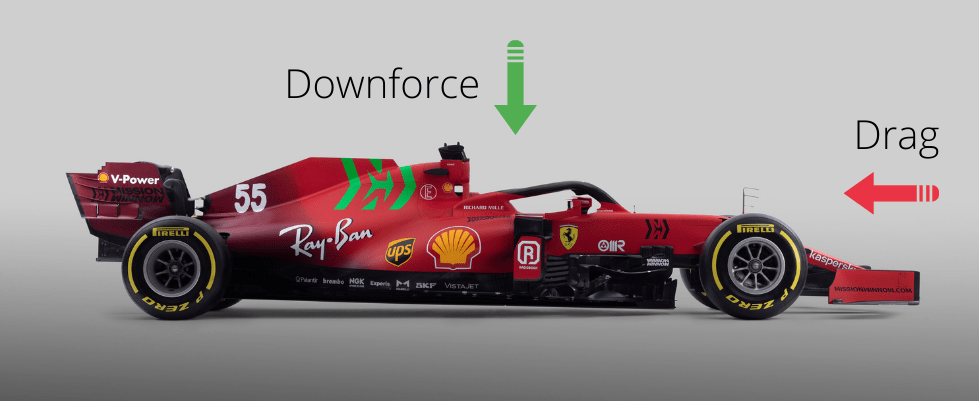In Formula One, It’s not just about how good a driver is or how fast the car is, which determines the result. A lot of engineering and intellect come into play when designing a Livery, which results in high speed. One of the critical aspects of Formula One is Downforce.
In Formula 1, aerodynamics plays a crucial role in determining a car’s speed and handling. One of the essential concepts in aerodynamics is downforce. It refers to the force a car’s wings and body generate to push it down towards the track, increasing its grip and stability. In this article, we will explore downforce in Formula 1 and how it impacts the performance of cars.
What is Downforce?
Downforce is a force generated by the interaction between the car’s wings and the air flowing over and under them. When a car moves through the air, it creates an area of high pressure underneath the car and an area of low pressure above it. The pressure difference creates a force that pushes the car toward the track. This force eventually increases its grip and stability; this is known as downforce.
How is it Generated?
In Formula 1, downforce is generated by the car’s wings, designed to manipulate the airflow over and under the car. The front and rear wings are the primary sources of this force, while the car’s underbody also plays a crucial role in generating it.

The front wing is designed to create a high-pressure zone under the car, which pushes it down towards the track. Similarly, the rear wing is designed to create a low-pressure zone above the car, generating downforce. The shape and angle of the wings are critical in determining the amount of force they generate. The angle of attack, or the angle at which the wing meets the airflow, is also vital in determining the amount of downforce generated.
How Does Downforce Impact Performance?
Downforce is a critical factor in determining a car’s speed and handling. The more DF a car has, its grip and stability will improve. It allows it to take corners at higher speeds. This means that cars with more downforce can go through corners faster than cars with less DF, giving them a significant advantage on the track.

However, there is a trade-off when it comes to downforce. While more downforce improves grip and stability, it also creates more drag and slows the car down on the straights. This means that teams must find the right balance between downforce and drag to optimize their car’s performance.
READ MORE: Verstappen signs bumper new deal with Red Bull until end of 2028
In recent years, Formula 1 has introduced regulations to limit the amount of downforce that cars can generate. It helps to improve the quality of racing and reduce costs. However, despite these regulations, downforce remains critical in determining a car’s speed and handling.
Downforce is a critical concept in Formula 1, with a significant impact on the performance of the cars. The ability to generate downforce allows cars to take corners at higher speeds, which is essential for success on the track. However, finding the right balance between downforce and drag is critical for optimizing a car’s performance. With continued advances in aerodynamics and new regulations, it will be fascinating to see how downforce evolves in the world of Formula 1 in the years to come.


